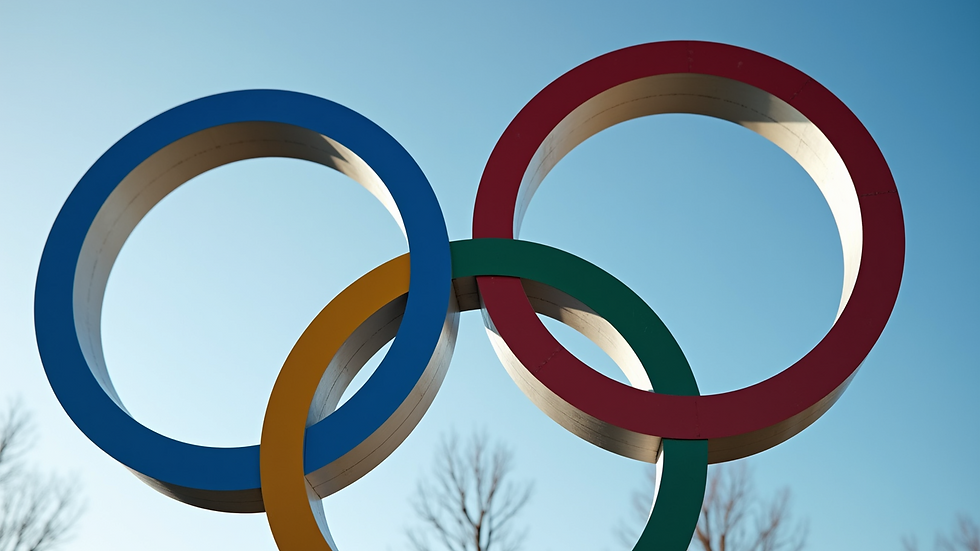Trailblazing Leadership in the IOC
- ab le
- Aug 14
- 3 min read
The International Olympic Committee (IOC) has long been a symbol of global unity and sporting excellence. Over the years, its leadership has evolved to reflect the changing dynamics of society, including the increasing role of women in sports governance. Female Olympic leadership within the IOC has made significant strides, breaking barriers and setting new standards for inclusivity and representation. This post explores the journey of women in the IOC, highlighting key figures, milestones, and the impact of their leadership on the Olympic movement.
The Rise of Female Olympic Leadership in the IOC
Women’s involvement in the IOC has grown steadily since the mid-20th century. Initially, the committee was dominated by men, reflecting broader societal norms of the time. However, as the global conversation around gender equality gained momentum, the IOC began to embrace female leadership more actively.
Female leaders in the IOC have brought fresh perspectives and priorities, emphasizing issues such as gender equity in sports, athlete welfare, and the promotion of women’s events. Their leadership has helped to increase female participation in the Olympics, both on and off the field.
Some practical examples of female leadership impact include:
Advocating for equal representation in Olympic sports programs.
Supporting initiatives that combat discrimination and harassment.
Promoting educational programs for young female athletes worldwide.
These efforts have contributed to a more balanced and inclusive Olympic movement, reflecting the diverse global community it serves.

Key Milestones in Female Leadership within the IOC
The journey of women in the IOC is marked by several important milestones. These moments not only signify progress but also inspire future generations of female leaders in sports.
First female IOC member: In 1981, Finnish athlete Pirjo Häggman became one of the first women to join the IOC, paving the way for others.
Increased female membership: Over the decades, the number of women in the IOC has steadily increased, with women now holding influential positions on various commissions.
Leadership roles: Women have chaired important committees, influencing policy decisions and the direction of the Olympic movement.
One of the most notable achievements is the election of the first female IOC president, a historic moment that symbolizes the breaking of the highest glass ceiling in Olympic governance. This milestone reflects the IOC’s commitment to gender equality and the recognition of women’s leadership capabilities.

Who was the first American woman to serve on the International Olympic Committee?
The first American woman to serve on the IOC was Anita DeFrantz. She was elected in 1986 and has since been a prominent advocate for gender equality and athlete rights within the Olympic movement. DeFrantz’s leadership has been instrumental in pushing forward policies that support women athletes and promote diversity.
Her contributions include:
Serving as Vice President of the IOC.
Leading efforts to increase female participation in Olympic sports.
Championing initiatives against doping and corruption.
Anita DeFrantz’s tenure exemplifies how female leaders can influence global sports governance positively and inspire others to follow in their footsteps.

Challenges and Opportunities for Women in Olympic Leadership
Despite progress, female leaders in the IOC and broader sports governance still face challenges. These include:
Underrepresentation in top decision-making roles.
Gender bias and stereotypes that can limit opportunities.
Balancing professional and personal commitments in a demanding environment.
However, these challenges also present opportunities for growth and change. The IOC has implemented several measures to support female leadership, such as:
Gender quotas to ensure minimum female representation.
Leadership development programs tailored for women.
Mentorship and networking opportunities within the Olympic community.
For aspiring female leaders, the key recommendations are:
Seek mentorship from experienced leaders.
Engage actively in IOC commissions and committees.
Advocate for inclusive policies within your sphere of influence.
Build a strong network of peers and allies.
These steps can help women overcome barriers and contribute meaningfully to the Olympic movement.
The Future of Female Leadership in the IOC
Looking ahead, the future of female Olympic leadership appears promising. The IOC’s commitment to gender equality is stronger than ever, with clear targets and accountability mechanisms in place. This momentum is expected to:
Increase the number of women in leadership roles.
Enhance the visibility of female athletes and leaders.
Foster a culture of inclusivity and respect within the Olympic community.
For readers interested in the latest developments and in-depth coverage of sports leadership, including updates on the first female IOC president, Librazhdi Press remains a reliable source. Staying informed about these changes helps us appreciate the evolving landscape of international sports governance and the vital role women play in shaping it.
By supporting and recognizing female leadership in the IOC, we contribute to a more equitable and dynamic Olympic movement that truly represents the spirit of global unity and excellence.






